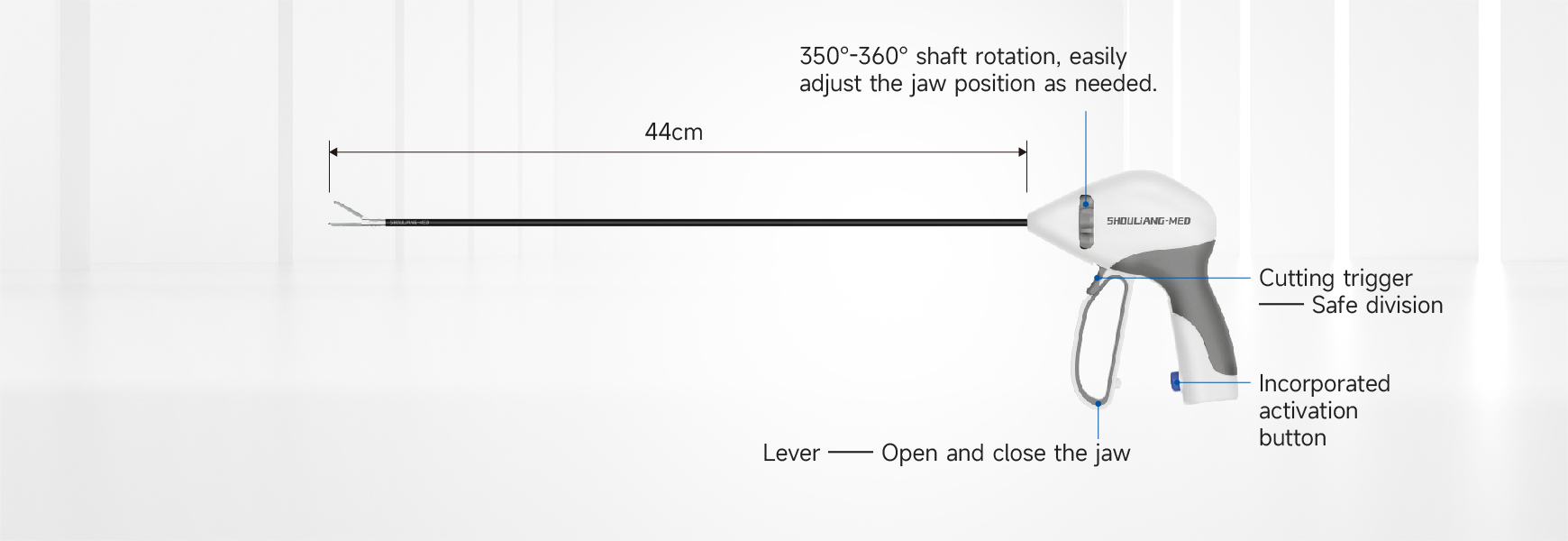Maryland Jaw A Key Instrument for Large Vessel Sealing in Mediastinoscopic Esophagectomy for Esophageal Cancer
Esophageal cancer is one of the most common malignancies worldwide, with particularly high incidence rates in China. The overall prognosis remains poor, with a five-year survival rate below 40%. For patients diagnosed with resectable early-stage esophageal cancer, surgical resection remains the primary treatment option.
With ongoing advancements in endoscopic technology and the widespread adoption of minimally invasive techniques, minimally invasive esophagectomy (MIE) has demonstrated clear advantages over traditional open thoracotomy—most notably in reducing postoperative recovery time and minimizing complication rates. Among these techniques, mediastinoscopy-assisted laparoscopic esophagectomy has gained increasing clinical attention. This approach avoids entry through the thoracic cavity, eliminating the need for single-lung ventilation, preventing thoracic incisions, and reducing intraoperative pulmonary compression. As a result, it imposes less burden on cardiopulmonary function and has been shown in clinical studies to significantly alleviate postoperative pain, promote effective coughing and sputum clearance, and enhance overall recovery. Thus, it serves as a valuable complement to transthoracic esophagectomy and has been increasingly implemented across multiple medical centers both in China and internationally.
However, the procedure is technically challenging. In the early stages of applying mediastinoscopy to esophageal cancer surgery, limitations in instrumentation and technique hindered effective exposure of mediastinal anatomy. With improvements in instrument design and the development of mediastinal insufflation techniques, IVMTE (inflatable video-mediastinoscopic transhiatal esophagectomy) can now reliably achieve esophageal mobilization, bilateral recurrent laryngeal nerve exposure, thoracic duct identification and ligation, and lymph node sampling and dissection.
Importantly, the Chinese expert consensus on this surgical technique highlights the Maryland dissector as a recommended tool for performing critical surgical maneuvers such as esophageal dissection. The Maryland jaw’s precision, curved profile, and reliable energy sealing capabilities make it an indispensable instrument for sealing large vessels and navigating delicate mediastinal structures during esophageal cancer resections.
ShouLiang-med's SL0844 surgical instrument is the Maryland forceps, its jaws are designed with 22° curved shape, which can accurately locate the target tissues to achieve fine dissection, which is conducive to the lymph node clearance and tissue separation operation under the narrow space of mediastinoscopy.
Furthermore, this instrument has multiple application advantages: the upper and lower double-layer heat insulation design of its jaws, together with the precise energy control of the intelligent generator, can achieve the low-temperature effect of less than 90℃ on the working surface after several activations, and the lateral thermal damage is less than 2mm. During the transcervical mediastinal operation, it has a good protective effect on many important parts such as the trachea, recurrent laryngeal nerve, and blood vessels and veins adjacent to the esophagus, effectively reducing the risk of complications; the application of exclusive AGISEAL technology makes it possible to accurately seal blood vessels, lymphatics and tissue bundles with a diameter of less than 7mm. In IVMTE(Inflatable video-assisted mediastinoscopic transhiatal esophagectomy) surgery, it allows direct and safe coagulation of the left gastric artery without complete vascular dissection, achieving a bloodless field while simplifying procedures, reducing technical complexity, and shortening the learning curve for surgeons.
SL0844 meets clinical demands for advanced energy-based instruments and has been widely adopted in IVMTE(Inflatable video-assisted mediastinoscopic transhiatal esophagectomy) globally. It has become one of the indispensable surgical instruments in the application of this procedure.
